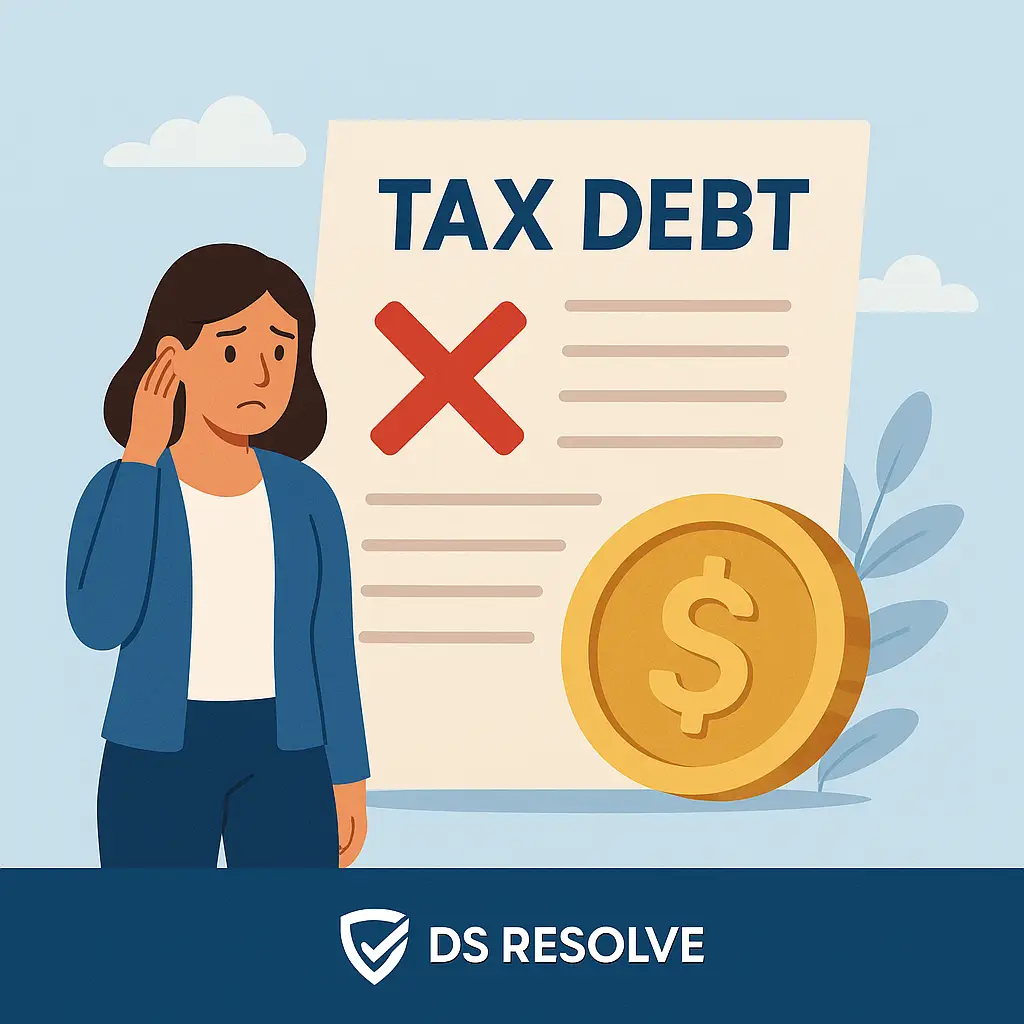Guide to Tax Debt in the United States
What Is Tax Debt?
Tax debt occurs when an individual or business owes unpaid federal, state, or local taxes. The most common type is federal income tax debt owed to the Internal Revenue Service (IRS), but taxpayers may also owe state income taxes, payroll taxes, or property taxes.
Failure to pay taxes on time can lead to penalties, interest, liens, wage garnishment, and even asset seizure. However, there are programs in place to help taxpayers resolve or reduce their tax debt.
Why Does Tax Debt Accumulate?
- Underpayment: Not withholding enough from paychecks or making insufficient estimated payments.
- Unexpected Tax Bills: Changes in income, gig work, or lump-sum distributions.
- Filing Late or Not Filing: Failing to file a return can trigger estimated assessments and penalties.
- Inability to Pay: Financial hardship or job loss.
- Audit Adjustments: The IRS may reassess taxes owed after an audit.
The IRS Tax Debt Collection Process
- Notice of Balance Due: The IRS sends a CP14 or other notice of tax owed.
- Failure to Pay: If unpaid, additional notices are sent with escalating consequences.
- Federal Tax Lien: Federal Tax Lien: If a tax debt remains unpaid after the IRS issues a Notice and Demand for Payment, the IRS is legally permitted to file a Notice of Federal Tax Lien after 10 days. However, in practice, the IRS typically files a lien only after multiple notices and continued non-payment.
- Levy and Garnishment:
- The IRS can garnish wages, seize bank accounts, property, or intercept tax refunds. However, before initiating a levy or wage garnishment, the IRS is generally required to send a Final Notice of Intent to Levy (such as Letter 1058 or LT11) at least 30 days in advance. Seizures are not immediate after the first notice.
- Private Debt Collection: Some older or lower-priority debts may be referred to third-party collectors. For federal tax debts, the IRS generally has 10 years from the date the tax is assessed to collect the debt. This period is known as the Collection Statute Expiration Date (CSED).
Options for Resolving Tax Debt
- Installment Agreement: Installment Agreement: The IRS offers several types of payment plans, including short-term, long-term, streamlined, and partial payment installment agreements. Each type has specific eligibility requirements.
- Offer in Compromise (OIC): Settle your debt for less than you owe if you qualify.
- Currently Not Collectible (CNC): Currently Not Collectible (CNC): If you are experiencing financial hardship, the IRS may temporarily pause collection efforts. However, interest and penalties continue to accrue while your account is in CNC status.
- Penalty Abatement: You may request removal of penalties for reasonable cause or as a first-time offender.
- Bankruptcy: In rare cases, certain older tax debts may be discharged through Chapter 7 or Chapter 13 bankruptcy. However, strict criteria must be met:
- The tax debt must be related to a tax return filed at least two years prior;
- The tax debt must have been due for at least three years;
- The IRS must have assessed the debt at least 240 days before the bankruptcy filing;
- There must be no fraud or tax evasion involved.
- Discharge of tax debt in bankruptcy is uncommon and subject to these precise rules.
- State Programs: Many states offer similar repayment and settlement programs.
Consumer Protections for Taxpayers
- Taxpayer Bill of Rights: Ensures fair treatment, privacy, and the right to challenge and appeal IRS decisions.
- Collection Due Process (CDP) Hearing: You may request a hearing before a levy is enforced.
- Appeals Process: Disputes can be reviewed by the IRS Office of Appeals.
- The Fair Debt Collection Practices Act (FDCPA): it applies only to private debt collection agencies, not to the IRS itself. Most tax debts are collected directly by the IRS, which is not subject to the FDCPA. The FDCPA protections apply only if your tax debt is actually assigned to a private collection agency—a process that remains relatively rare, involving only a small portion of IRS debts
State Tax Debt Collection
- State Revenue Agencies: State Revenue Agencies: State tax authorities may use similar collection tools, such as liens, garnishments, and levies. However, procedures, time limits, and consumer protections vary significantly from state to state.
- Statute of Limitations: Varies by state but typically ranges from 3–20 years.
- Relief Options: Many states offer hardship programs, amnesty periods, and settlement options.
States Where Debt Collectors Do NOT Require a License (as of 2024)
Georgia, Kansas, Kentucky, Michigan, Missouri, Montana, New Hampshire, Oklahoma, Pennsylvania, South Carolina, South Dakota, Tennessee, Wyoming
Note: While this list is generally accurate for consumer debt, some states may have different requirements for the collection of tax debts. Laws can change frequently, so always check with your state’s attorney general or consumer protection agency for the most current information.
If your tax debt is sent to a third-party collection agency, check your state’s licensing requirements.
How to Verify Tax Debt or Collector
- Use the IRS online tool to check your balance: https://www.irs.gov/payments/view-your-tax-account
- Review all IRS or state notices carefully
- Contact the IRS directly at 1-800-829-1040
- If contacted by a private agency, verify their authorization through the IRS or state tax agency
Key Takeaways
- Tax debt can lead to serious consequences such as liens, garnishment, and asset seizure
- The IRS offers programs like payment plans and settlement options to help resolve debt
- You have rights as a taxpayer, including appeal and hardship relief
- Always verify collection agencies and explore resolution options before paying

